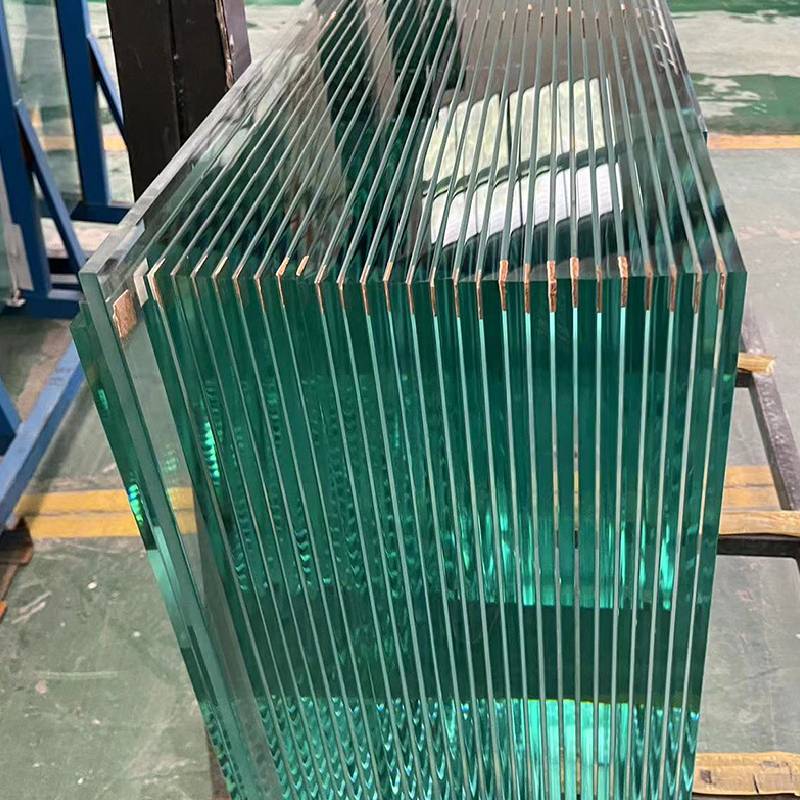The Impact of Tinted and Reflective Glass in Modern Architecture
In recent years, tinted and reflective glass has gained immense popularity in modern architecture, not only for its aesthetic appeal but also for its functional benefits. This type of glass is widely used in commercial, residential, and industrial buildings, contributing significantly to the modern skyline. The advantages of tinted and reflective glass extend beyond visual impact; they foster energy efficiency, enhance privacy, and provide solar protection.
Aesthetic Appeal and Versatility
Tinted and reflective glass serves as a dynamic design element, allowing architects and designers to play with light and shadows. Various tints are available, including bronze, gray, blue, and green, which can complement different architectural styles and color palettes. Reflective glass, on the other hand, offers a sleek, modern finish that can transform a building's façade into a striking visual statement. By incorporating tinted and reflective glass, architects can create buildings that blend harmoniously with their surroundings while standing out as contemporary masterpieces.
Energy Efficiency
One of the most significant benefits of tinted and reflective glass is its ability to improve energy efficiency. Buildings account for a large percentage of energy consumption worldwide, primarily due to heating and cooling demands. Tinted glass reduces the amount of heat entering a building by absorbing a portion of the solar radiation, which can lead to lower cooling costs, especially in warmer climates. Reflective glass functions similarly by bouncing back sunlight, further reducing heat gain.
Moreover, the use of tinted and reflective glass can lead to a decrease in greenhouse gas emissions
. By minimizing the reliance on artificial heating and cooling systems, buildings can operate more sustainably. Energy-efficient designs that incorporate these types of glass contribute to LEED (Leadership in Energy and Environmental Design) certifications, which not only enhance the building's marketability but also promote environmental responsibility.
Enhanced Privacy and Security
tinted and reflective glass
Tinted glass is particularly beneficial for enhancing privacy in both residential and commercial spaces. It allows occupants to enjoy natural light and views of the outside world while preventing outsiders from easily seeing in. This aspect is paramount in urban environments where buildings are often in close proximity to each other. Reflective glass further enhances this benefit by creating a one-way mirror effect during the day, allowing occupants to maintain their privacy without sacrificing light.
In addition to privacy, tinted and reflective glass can provide an added layer of security. Thicker variants of tinted glass can withstand impacts better than standard glass, reducing the risk of break-ins and vandalism. This characteristic is particularly valuable in commercial settings, where safeguarding assets is a priority.
Solar Protection and User Comfort
Beyond aesthetics and energy efficiency, tinted and reflective glass offers significant solar protection. Prolonged exposure to sunlight can cause furnishings, artwork, and flooring to fade. Tinted and reflective glass can block up to 99% of harmful UV rays, prolonging the lifespan of interior elements and enhancing occupants' comfort. This protection is vital in locations where sunlight is intense for extended periods, ensuring that indoor spaces remain inviting and enjoyable.
Furthermore, with the growing concern over climate change and sustainability, the demand for building materials that contribute to occupant wellbeing continues to rise. Tinted and reflective glass aligns with this trend by creating a more comfortable environment, reducing glare, and maintaining a stable internal temperature.
Conclusion
The integration of tinted and reflective glass in modern architecture represents a harmonious balance between beauty and functionality. As technology evolves, the variety of choices available continues to expand, offering architects and builders more tools to create compelling and sustainable designs. By reducing energy consumption, enhancing privacy and security, and providing sun protection, tinted and reflective glass has solidified its place as an essential component in the architectural landscape of the 21st century. As cities grow and our environmental awareness increases, we can expect tinted and reflective glass to play an even more significant role in shaping our urban environments.
 Afrikaans
Afrikaans  Albanian
Albanian  Amharic
Amharic  Arabic
Arabic  Armenian
Armenian  Azerbaijani
Azerbaijani  Basque
Basque  Belarusian
Belarusian  Bengali
Bengali  Bosnian
Bosnian  Bulgarian
Bulgarian  Catalan
Catalan  Cebuano
Cebuano  Corsican
Corsican  Croatian
Croatian  Czech
Czech  Danish
Danish  Dutch
Dutch  English
English  Esperanto
Esperanto  Estonian
Estonian  Finnish
Finnish  French
French  Frisian
Frisian  Galician
Galician  Georgian
Georgian  German
German  Greek
Greek  Gujarati
Gujarati  Haitian Creole
Haitian Creole  hausa
hausa  hawaiian
hawaiian  Hebrew
Hebrew  Hindi
Hindi  Miao
Miao  Hungarian
Hungarian  Icelandic
Icelandic  igbo
igbo  Indonesian
Indonesian  irish
irish  Italian
Italian  Japanese
Japanese  Javanese
Javanese  Kannada
Kannada  kazakh
kazakh  Khmer
Khmer  Rwandese
Rwandese  Korean
Korean  Kurdish
Kurdish  Kyrgyz
Kyrgyz  Lao
Lao  Latin
Latin  Latvian
Latvian  Lithuanian
Lithuanian  Luxembourgish
Luxembourgish  Macedonian
Macedonian  Malgashi
Malgashi  Malay
Malay  Malayalam
Malayalam  Maltese
Maltese  Maori
Maori  Marathi
Marathi  Mongolian
Mongolian  Myanmar
Myanmar  Nepali
Nepali  Norwegian
Norwegian  Norwegian
Norwegian  Occitan
Occitan  Pashto
Pashto  Persian
Persian  Polish
Polish  Portuguese
Portuguese  Punjabi
Punjabi  Romanian
Romanian  Russian
Russian  Samoan
Samoan  Scottish Gaelic
Scottish Gaelic  Serbian
Serbian  Sesotho
Sesotho  Shona
Shona  Sindhi
Sindhi  Sinhala
Sinhala  Slovak
Slovak  Slovenian
Slovenian  Somali
Somali  Spanish
Spanish  Sundanese
Sundanese  Swahili
Swahili  Swedish
Swedish  Tagalog
Tagalog  Tajik
Tajik  Tamil
Tamil  Tatar
Tatar  Telugu
Telugu  Thai
Thai  Turkish
Turkish  Turkmen
Turkmen  Ukrainian
Ukrainian  Urdu
Urdu  Uighur
Uighur  Uzbek
Uzbek  Vietnamese
Vietnamese  Welsh
Welsh  Bantu
Bantu  Yiddish
Yiddish  Yoruba
Yoruba  Zulu
Zulu 

